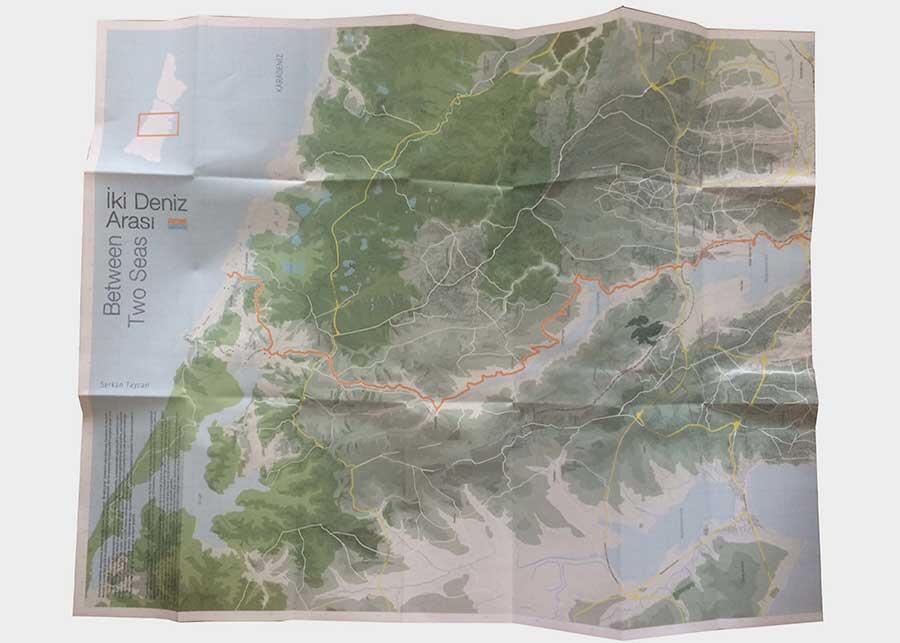
On Day Three, our tour’s scope expanded to engulf the entire Bosporus Strait and the lands that flank it. Özlem Altınkaya Genel caught us up to the 20th-century with a brief on the demography and politics of Istanbul’s outlying municipalities, followed by Özlem Unsal’s brief on the city’s urban renewal, reclamation, and recent gentrification. We drove out of the city and up the isthmus to Yeniköy, a town perched above the Bosporus’ mouth into the Black Sea. Along the way, our bus-full of scholars pointed out the myriad effects of Istanbul’s rapid expansion on its surrounding countryside, from globalized gated communities to freshly-skimmed strip mines. We surveyed construction underway on the largest planned airport in the world, Istanbul’s third, and spoke with artist and activist Serkan Taycan about the proposed canal project and his Between Two Seas project.
In all honesty, we were mildly concerned and highly puzzled when Serkan Taycan led us quite literally off the beaten path and through the shimmering, whispering tall grass of Istanbul’s countryside. We knew that we were walking along the roughly proposed path of the canal, revealingly described as a “crazy project” by its chief advocate and proponent, current President of Turkey Recep Tayyip Erdoğan. We knew that this route was tens of miles/dozens of kilometers away from the city’s core, an imaginary line cut through the “European” western hinterland of Istanbul. And then we came over the crest of one last hill, and we could almost reach out and touch the city’s limits. By walking us along an imaginary line, Serkan had brought us up against a very real and breathtaking one: the edge of the built environment and physical sprawl of Istanbul’s seventeen million residents. One of the developments in view, according to Professor Güvenç, would soon house 160,000 families.


